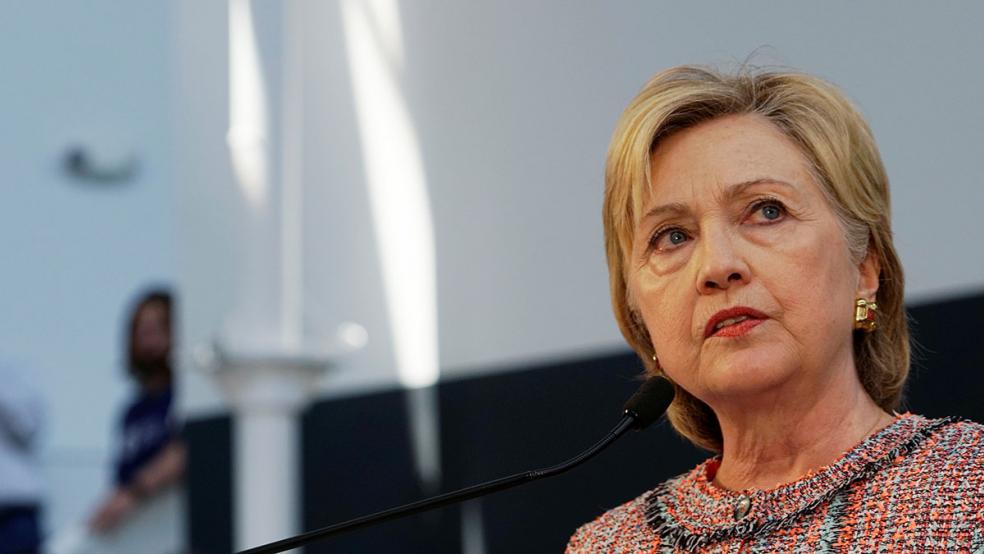Imagine traveling on the maiden voyage of the RMS Titanic, the ship that its makers famously bragged was unsinkable. The ship has just hit a massive iceberg, its famed compartment design has failed to contain the breach, and the bow is getting dangerously close to the water. Suddenly, one of the crew rushes up to you and says, “I know exactly what will save us …. Another iceberg!”
This week, that is exactly what advocates of the Affordable Care Act (ACA), including President Barack Obama and Democratic presidential nominee Hillary Clinton, prescribed for the ailing, byzantine Obamacare system. As the few remaining Obamacare co-ops collapse, despite billions in federal subsidies, Democrats want to revive a controversial component of their party’s original plan: the public option.
Related: Obama Opens the Back Door to a Single-Payer Nationalized Health Plan
Citing competition concerns, Obama urged lawmakers to revive a Medicare-esque government plan, at least in smaller markets. “Adding a public plan in such areas would strengthen the marketplace approach, giving consumers more affordable options while also creating savings for the federal government,” Obama wrote in the Journal of the American Medical Association. “I think Congress should revisit a public plan to compete alongside private insurers in areas of the country where competition is limited.”
The Daily News reported over the weekend that Hillary Clinton has backed the idea, although she has been less explicit about the idea. During the Democratic primary, Clinton opposed Bernie Sanders’ demand for “Medicare for all” as far too costly. Her campaign now says that she favors state-based, government-run plans to provide more competition.
Recall that the initial ACA proposals included the public option to combat the supposed corporate greed that drove health-insurance underwriters. A government-provided plan in each market, based loosely on Medicare, would act to keep excessive profits in check by forcing insurers to lower premiums. Profit margins for health insurers at that time were hardly at windfall levels; the average was a modest 3.3 percent in 2008, far lower than, say, the legal profession (14.3 percent).
Related: Get Ready for Huge Obamacare Premium Hikes in 2017
Opponents of the public option accused the Obama administration of using the public option as a Trojan horse for nationalized health care by undercutting prices and forcing insurers out of the industry. Even some advocates admitted as much. At that time, Rep. Anthony Weiner (then D-NY) told Joe Scarborough in August 2009 that of course single-payer was the end game.
“You actually do want the federal government to take over all of health care,” the MSNBC host said. “I want Medicare for all Americans,” Weiner replied – a slogan that reappeared during Bernie Sanders’ campaign for the Democratic presidential nomination in 2015. A month after Weiner’s admission, the Democrat-controlled Senate Finance Committee put an end to the public option. In its place, however, came federally subsidized co-ops. They filled the same role as the public option where they existed, and had two purposes – one explicit, the other less so.
The more explicit purpose, or at least the one touted by ACA advocates, was to provide more choice outside of the for-profit industry, in exactly the same manner that Obama demanded in his JAMA argument. The less explicit purpose was to prove that the government could run a health insurance plan better than private-sector corporations, despite their experience and investment in risk-pool management.
Related: Obamacare Insurers Are Looking for a Taxpayer Bailout
Unfortunately for Obamacare cheerleaders, almost every co-op has hit their own icebergs over the past year. In the past two weeks alone, two of the few remaining (in Oregon and Illinois) have closed their doors, leaving both patients and providers in the lurch. They have blamed a decision by Congress to limit risk-corridor payouts to taxes collected on “excess profits” by other insurers, but that acknowledges a core criticism of the public-option concept: they are incapable of sustainable operations without large infusions of federal subsidies.
As critics predicted in 2009, the public option in the form of co-ops turned out to be unsustainable. The biggest problem for Obamacare advocates is that they turned out to be far less sustainable than private-sector insurance, even under the onerous conditions imposed on insurers in the ACA’s mandates. The icebergs turned out to be so large that the government’s ships sunk immediately without general-fund dollars to keep them afloat, making arguments that the government could operate better than private-sector insurers.
The irony of using the competition argument for the public option should not be overlooked. As noted, the underlying motive of establishing the public option was to crowd out private insurers, but even apart from that, Obamacare has been the biggest threat to choice. During the debate over the ACA in 2009-10, Democrats argued that setting up exchanges and establishing national mandates on coverage would improve competition. Republicans argued that eliminating laws barring interstate sales of insurance would work better.
Related: Obamacare: Costs Go Up, Insurers Drop Out and Consumers Get Screwed
The results speak for themselves. After three years of attempting to work within the ACA’s framework, insurers are now walking away from numerous markets, and some suggest that an exit from Obamacare altogether may not be far off. They can see the icebergs on the horizon better than the government, and know that they cannot avoid them forever.
The argument for a public option now amounts to a back-door opening for the single-payer system that Democrats wanted all along. Unlike the co-ops, which didn’t have direct access to general-fund spending, public-option plans would allow the executive branch to direct funds on a nearly unlimited basis as an entitlement program, removing the barriers to a sea of red ink. All it does is rearrange the deck chairs on a sinking ship – and like the Titanic, there won’t be nearly enough lifeboats for the rescue needed from the coming disaster.






